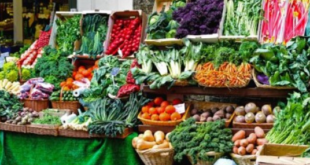Urban Food Experience
An urban food experience typically refers to the diverse and vibrant culinary scene found in urban or metropolitan areas. Cities around the world are known for their rich tapestry of food options, ranging from street food stalls to high-end restaurants. Here are some elements that contribute to the urban food experience:
- Diversity of Cuisines: Urban areas often boast a wide range of international cuisines, reflecting the multicultural nature of cities. You can find restaurants serving dishes from various parts of the world, offering an opportunity to explore and taste different flavors.
- Street Food Culture: Many cities have a bustling street food scene, with vendors selling delicious and affordable snacks and meals. This adds an element of spontaneity and authenticity to the urban food experience.
- Food Markets: Urban areas frequently host food markets where local vendors showcase their products. These markets can feature fresh produce, artisanal goods, and a variety of ready-to-eat foods, providing a sensory-rich experience.
- Pop-up Restaurants and Food Trucks: The urban food scene often includes pop-up restaurants and food trucks, offering a dynamic and ever-changing selection of culinary delights. This trend allows chefs to experiment with new concepts and flavors.
- Fine Dining and Michelin-Starred Restaurants: Cities are also known for their upscale dining establishments, including Michelin-starred restaurants. These venues offer a refined and often innovative dining experience, showcasing the culinary expertise of talented chefs.
- Cultural Fusion: Urban food experiences often reflect the fusion of different culinary traditions. Chefs may blend ingredients and techniques from various cultures to create unique and exciting dishes.
- Food Festivals and Events: Cities frequently host food festivals and events that celebrate local and international cuisines. These gatherings bring together food enthusiasts, chefs, and vendors, creating a lively and festive atmosphere.
- Accessibility and Convenience: In urban areas, food is often readily accessible, with a plethora of options for quick bites, takeout, and delivery. This convenience caters to the fast-paced urban lifestyle.
- Innovative Concepts: Urban areas are hubs for culinary innovation. Chefs and restaurateurs often experiment with new cooking techniques, presentation styles, and dining concepts, keeping the food scene dynamic and exciting.
- Social and Community Aspect: The urban food experience is not just about the food itself but also the social aspect. People often gather in cafes, restaurants, and food markets to connect, share meals, and experience the communal joy of dining.
Exploring the urban food scene can be a delightful adventure, offering a taste of the local culture, creativity, and culinary talent that defines a city’s gastronomic landscape.
 Johurul
Johurul
